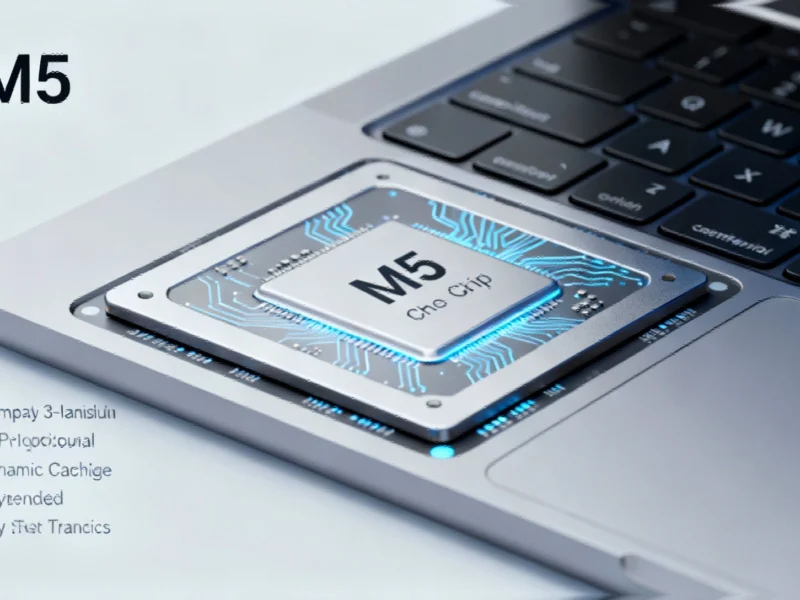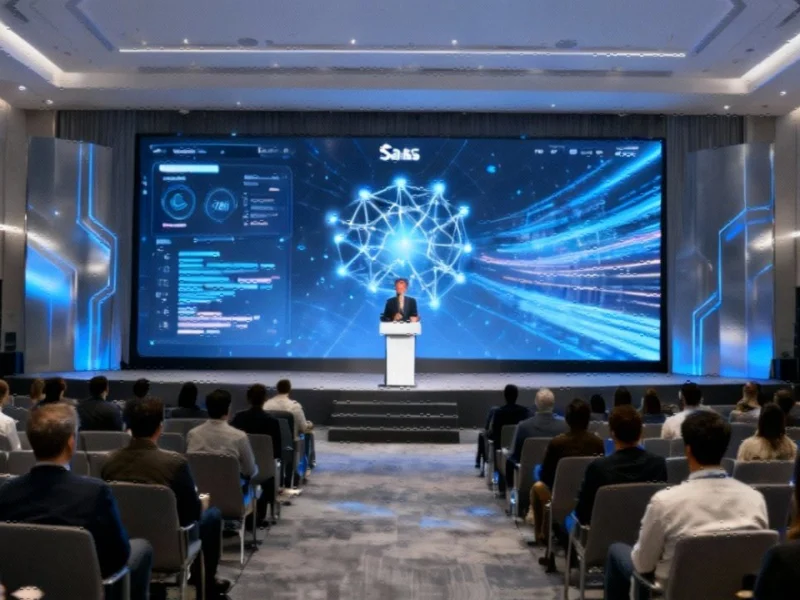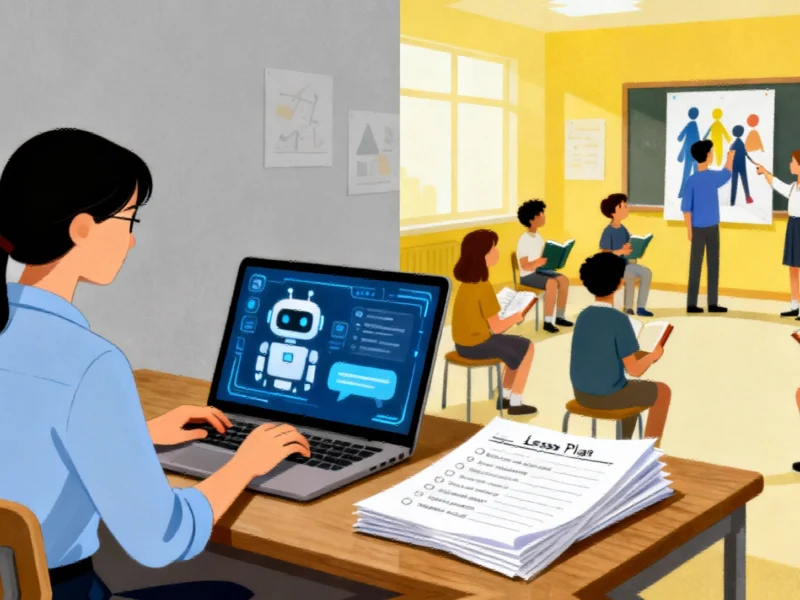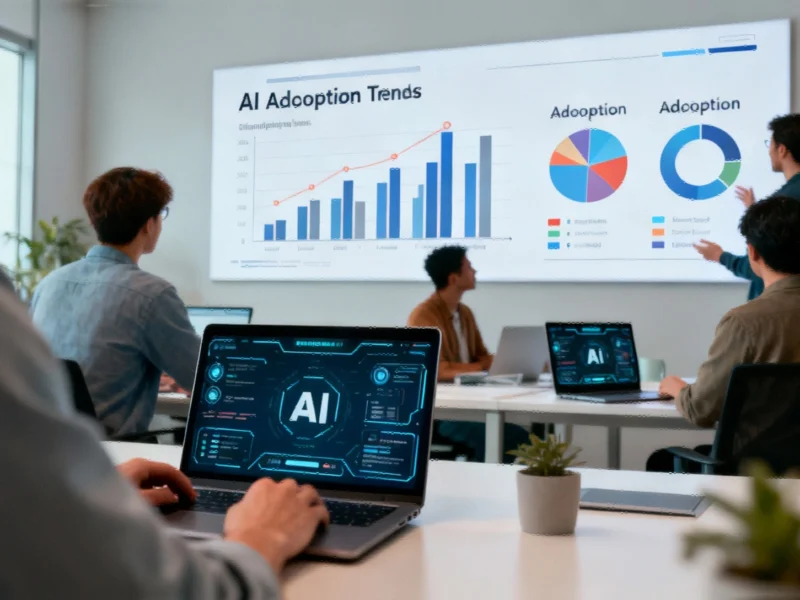Apple has fundamentally redefined the boundaries of on-device artificial intelligence with the introduction of its groundbreaking M5 chip, marking what senior vice president Johny Srouji describes as “the most significant AI performance leap in Apple silicon history.” This comprehensive silicon overhaul arrives as Apple’s M5 chip redefines on-device AI capabilities across the company’s premium device ecosystem, delivering unprecedented computational power while maintaining Apple’s signature energy efficiency.
The timing of Apple’s silicon advancement comes amid industry observers questioning Apple’s AI strategy and broader competitive shifts in the semiconductor landscape. While some competitors rely on cloud-dependent AI solutions, Apple’s M5 represents a firm commitment to localized processing that preserves user privacy and eliminates latency.
Architectural Breakthroughs Powering Next-Generation Performance
Built on cutting-edge third-generation 3-nanometer technology, the M5 chip introduces a completely reimagined architecture that delivers staggering performance improvements. Apple’s claims include over four times the GPU compute power compared to the M3 and more than six times the performance of the original M1 chip, with Neural Accelerators integrated directly into every processing core.
The chip’s redesigned 10-core GPU represents Apple’s most balanced approach to graphics and compute performance yet, achieving up to 45% faster graphics performance than the M4 while maintaining exceptional power efficiency. This architectural advancement stands in stark contrast to Microsoft’s strict rules meaning older CPUs can’t run Windows, highlighting Apple’s commitment to backward compatibility and sustained performance across generations.
Neural Engine Evolution: On-Device AI Without Compromise
At the heart of the M5’s AI capabilities lies its 16-core Neural Engine, working in perfect synchronization with advanced GPU accelerators to handle everything from creative diffusion models to locally-processed large language models. This unified approach enables Apple Intelligence features like Image Playground and Genmoji to generate results with dramatically reduced latency and power consumption.
For developers, the M5 unlocks automatic performance gains through Apple’s Core ML, Metal Performance Shaders, and Foundation Models frameworks. The chip’s Neural Accelerators can be accessed directly using Tensor APIs, creating a tighter feedback loop between AI development and real-world performance. This developer-friendly approach emerges as OpenAI’s growing alliance of chip and compute partners continues to reshape the AI hardware landscape.
Memory and Efficiency: Powering Sustainable Innovation
The M5 features a substantial 153 GB/s of unified memory bandwidth—nearly 30% higher than its predecessor—and supports up to 32 GB of memory. This expanded memory architecture enables users to run larger AI models and handle demanding creative workloads in applications like Photoshop and Final Cut Pro without performance degradation.
Apple’s focus on efficiency remains central to the M5’s design philosophy. By consuming less power per operation, the chip supports Apple’s ambitious 2030 carbon-neutral goals while delivering breakthrough performance. This efficiency-first approach demonstrates how advanced silicon can drive both performance and sustainability forward simultaneously.
Visual Computing Transformation Across Apple’s Ecosystem
For creative professionals and spatial computing enthusiasts, the M5 delivers transformative visual improvements. The chip introduces third-generation ray tracing and rearchitected dynamic caching for smoother gameplay and more responsive 3D applications. On Apple Vision Pro specifically, the M5 renders approximately 10% more pixels while supporting up to 120Hz refresh rates, resulting in crisper details and reduced motion blur on the headset’s advanced micro-OLED displays.
These visual enhancements arrive at a critical moment for Apple’s spatial computing ambitions. The improved performance could help accelerate Vision Pro adoption by providing developers with the horsepower needed to create more compelling immersive experiences and giving users renewed reasons to engage with the platform.
Strategic Implications and Market Position
Apple’s M5 launch represents a strategic masterstroke in the increasingly competitive AI hardware space. While Apple faces AI talent drain amid acquisition speculation, the company continues to demonstrate its silicon design prowess. The M5’s ability to handle sophisticated AI workloads entirely on-device positions Apple uniquely in a market where many competitors still rely heavily on cloud processing.
The chip’s rollout across the 14-inch MacBook Pro, iPad Pro, and Apple Vision Pro creates a unified AI performance foundation for Apple’s premium product lineup. This cohesive approach stands in contrast to the fragmented AI hardware landscape seen elsewhere, such as Walmart’s strategic price cuts making Acer Nitro V gaming laptops more accessible, highlighting different approaches to market penetration.
As Apple begins shipping devices powered by the M5 chip, the industry watches closely to see how this silicon advancement will reshape user expectations for on-device AI performance. With preorders now open and the first devices scheduled to reach consumers soon, Apple appears poised to set a new standard for what’s possible when artificial intelligence meets world-class silicon design.
Based on reporting by {‘uri’: ‘techrepublic.com’, ‘dataType’: ‘news’, ‘title’: ‘TechRepublic’, ‘description’: ‘Providing IT professionals with a unique blend of original content, peer-to-peer advice from the largest community of IT leaders on the Web.’, ‘location’: {‘type’: ‘country’, ‘geoNamesId’: ‘6252001’, ‘label’: {‘eng’: ‘United States’}, ‘population’: 310232863, ‘lat’: 39.76, ‘long’: -98.5, ‘area’: 9629091, ‘continent’: ‘Noth America’}, ‘locationValidated’: False, ‘ranking’: {‘importanceRank’: 199473, ‘alexaGlobalRank’: 3969, ‘alexaCountryRank’: 2546}}. This article aggregates information from publicly available sources. All trademarks and copyrights belong to their respective owners.



